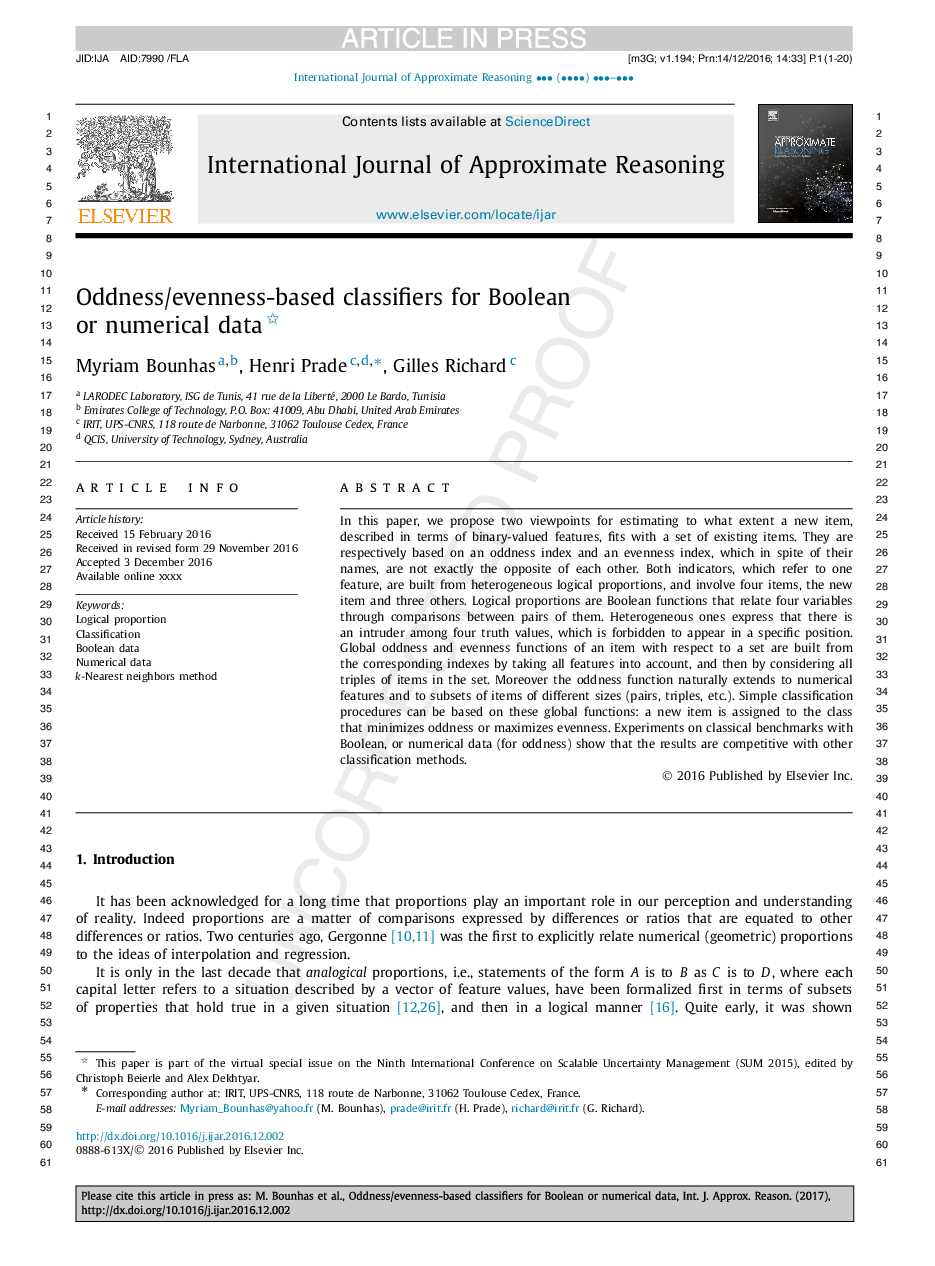| Article ID | Journal | Published Year | Pages | File Type |
|---|---|---|---|---|
| 4945311 | International Journal of Approximate Reasoning | 2017 | 20 Pages |
Abstract
In this paper, we propose two viewpoints for estimating to what extent a new item, described in terms of binary-valued features, fits with a set of existing items. They are respectively based on an oddness index and an evenness index, which in spite of their names, are not exactly the opposite of each other. Both indicators, which refer to one feature, are built from heterogeneous logical proportions, and involve four items, the new item and three others. Logical proportions are Boolean functions that relate four variables through comparisons between pairs of them. Heterogeneous ones express that there is an intruder among four truth values, which is forbidden to appear in a specific position. Global oddness and evenness functions of an item with respect to a set are built from the corresponding indexes by taking all features into account, and then by considering all triples of items in the set. Moreover the oddness function naturally extends to numerical features and to subsets of items of different sizes (pairs, triples, etc.). Simple classification procedures can be based on these global functions: a new item is assigned to the class that minimizes oddness or maximizes evenness. Experiments on classical benchmarks with Boolean, or numerical data (for oddness) show that the results are competitive with other classification methods.
Keywords
Related Topics
Physical Sciences and Engineering
Computer Science
Artificial Intelligence
Authors
Myriam Bounhas, Henri Prade, Gilles Richard,
